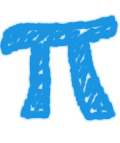Zeros of linear combinations of Dirichlet L-functions on the critical line
Date: Mon, Mar 25, 2024
Location: PIMS, University of British Columbia, Zoom, Online
Conference: Analytic Aspects of L-functions and Applications to Number Theory
Subject: Mathematics, Number Theory
Class: Scientific
CRG: L-Functions in Analytic Number Theory
Abstract:
Fix $N\geq 1$ and let $L_1, L_2, \ldots, L_N$ be Dirichlet L-functions with distinct, primitive and even Dirichlet characters. We assume that these functions satisfy the same functional equation. Let $F(s)∶= c_1L_1(s)+c_2L_2(s)+\ldots+c_NL_N(s)$ be a linear combination of these functions ($c_j \in\mathbb{R}^*$ are distinct). $F$ is known to have two kinds of zeros: trivial ones, and non-trivial zeros which are confined in a vertical strip. We denote the number of non-trivial zeros $\rho$ with $\mathfrak{I}(\rho)\leq T$ by $N(T)$, and we let $N_\theta(T)$ be the number of these zeros that are on the critical line. At the end of the 90's, Selberg proved that this linear combination had a positive proportion of zeros on the critical line, by showing that $\kappa F∶=\lim \inf T (N_\theta(2T)−N_\theta(T))/(N(2T)−N(T))\geq c/N^2$ for some $c>0$. Our goal is to provide an explicit value for $c$, and also to improve the lower bound above by showing that $\kappa_F \geq 2.16\times 10^{-6}/(N \log N)$, for any large enough $N$.



